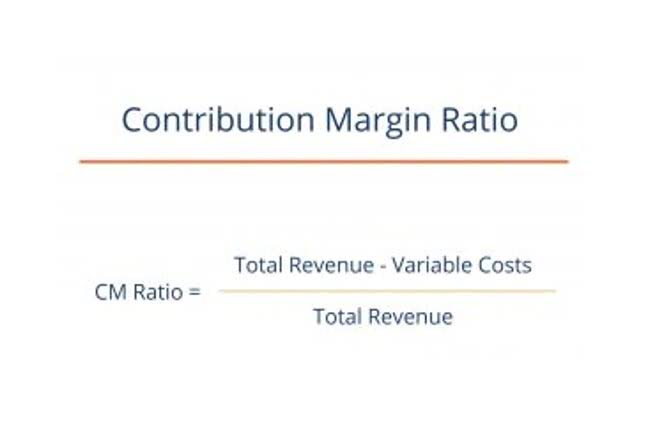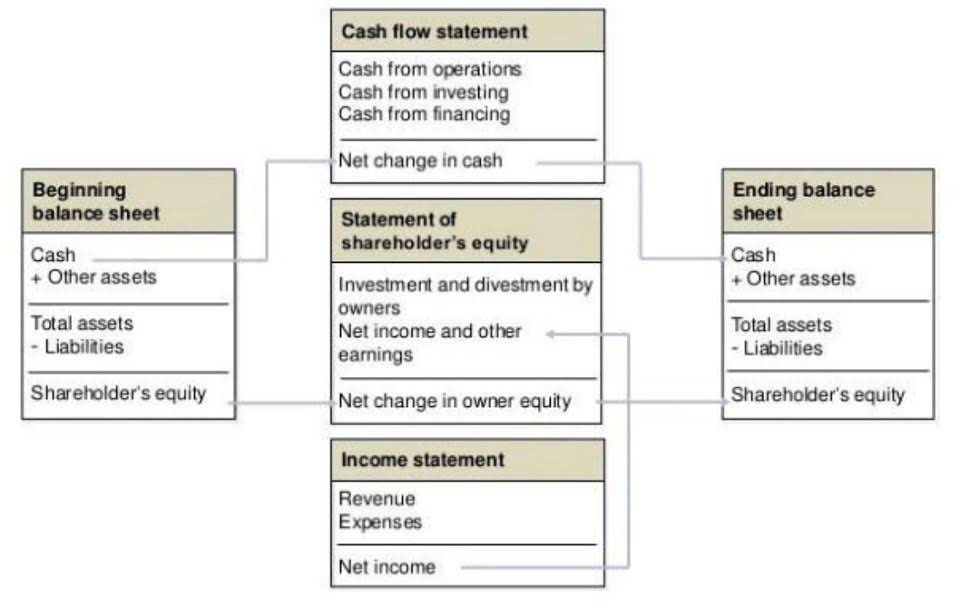Invoice Processing Procure to Pay
Reduce operational costs and gain efficiency by automating vendor payments using Yardi’s virtual credit card. Retain full control over accounts payable and save time processing paper checks and EFT payments. Streamline the way you process invoices with efficient, online approval workflows. Approve invoices faster and make fewer mistakes by scanning paper invoices and converting them into Voyager electronic transactions. Ensure timely vendor payments with Yardi’s virtual credit card, EFT, or automatic check writing. Process invoices electronically with Yardi PayScan and gain access to over 2 million MRO products with Yardi Marketplace.
Scanned invoice images are stored in the Voyager database and readily accessible for future review. Current Yardi clients are invited to browse class offerings and course descriptions (including prerequisites) on Client Central.
Retain Full Control
Vendors can view invoice status and payment details with VendorCafe. Text payments improve operational efficiencies while increasing resident satisfaction by providing an in-demand mobile service. Save time with every invoice approval as electronic payables are imported directly to Voyager and automatically linked to purchase orders. Scan batches of personal, corporate, bill pay and cashier’s checks as well as money orders to greatly reduce processing time.
Go paperless and reduce manual tasks with an end-to-end procure to pay solution
Avoid late fees and take advantage of early-pay discounts by accelerating invoice processing. Process fast, electronic payments to vendors with Yardi’s virtual credit card. Use a physical or virtual credit card to make vendor payments and eliminate manual credit card processing by depositing horizontal analysis: definition and overview funds directly into vendors’ banks through ACH. Electronic payables lower the cost of approving payables and reduce errors by eliminating redundant data entry.
Related Products
Leverage all the products in the Yardi Procure to Pay Suite to maximize your savings and operational efficiencies. Process invoices electronically with Yardi PayScan and gain access to more than 1 million MRO products with Yardi Marketplace. Centralize service contracts and vendor information in a single system of record. Manage risk by ensuring vendors meet compliancy requirements set by property managers and owners with VendorShield.
Instantly create receipt batches in Voyager for all items and permanently store the image files — so you don’t need to make copies. Residents can log in, view their account balances and pay rent directly from a bank account or with what is a balance sheet a credit or debit card. Online payments are entered directly into Yardi Voyager, with automatic deposits and easy bank reconciliation. Yardi Bill Pay processes, prints, transmits or mails payments, saving significant effort and increasing staff productivity. A robust dashboard gives you a deeper level of insight into payments. Let residents pay rent in cash at participating retail locations nationwide.
Add Text Payments
- Save time with every invoice approval as electronic payables are imported directly to Voyager and automatically linked to purchase orders.
- Ensure timely vendor payments with Yardi’s virtual credit card, EFT, or automatic check writing.
- Drilldown to transaction level data makes it easy for approvers to confidently approve costs for eligibility.
- Use a physical or virtual credit card to make vendor payments and eliminate manual credit card processing by depositing funds directly into vendors’ banks through ACH.
- Give residents the convenience of making payments online with simple, browser-based access and handy mobile apps.
Scanning may be done by your organization or outsourced how to complete form 1120s to Yardi’s full-service PayScan team. Reduce cost per invoice and enable timely payments by EFT, check or credit card with online approval workflows. Payments are recorded in Voyager in real time, keeping your payables information current. You can choose to pay vendors via mailed check, ACH or virtual credit card. Reduce operational costs with an outsourced vendor payment process that completes the automated procure to pay cycle. Reduce per-invoice costs with Yardi PayScan, which includes an automated online approval workflow through vendor payment and automatic recording in Yardi Voyager.
Our walk-in payment system (WIPS) provides the ease of a one-stop experience and reduces money order issues for your staff. Give residents the convenience of making payments online with simple, browser-based access and handy mobile apps. Self-paced, elearning courses, available through Yardi Aspire On Demand, provides learners with quality instruction, tailored to their needs and schedule. As a bonus, you can take full advantage of our extensive video training library on Client Central. Choose which payments to outsource and retain full oversight of your accounts payable. Mitigate risk by using VendorShield to streamline vendor onboarding and automation of ongoing compliancy verifications for vendors.
Facilitate fast and accurate approvals by quickly routing invoices to the right member of your team. Approvers receive email alerts, then log in to their dashboard to process each invoice. Gain access to more than 2 million MRO products and building supplies from nationally recognized suppliers through Yardi Marketplace. Drilldown to transaction level data makes it easy for approvers to confidently approve costs for eligibility.
Best Accounting Software For Small Business Of 2024
Cloud-based software like QuickBooks Online allows you to access your books from any Internet-enabled device. Meanwhile, on-premise programs like QuickBooks Desktop can be accessed only on the computer where it’s installed. In evaluating pricing, we considered the what is the difference between a trial balance and a balance sheet billing cycle (monthly or annual) and number of users.
FreshBooks’s built-in small-business expense tracking helps you maintain a balanced budget. And, like what is a credit card cash advance and the associated fees QuickBooks Online, FreshBooks includes built-in mileage tracking—a must for freelancers who plan to claim mileage expenses on their year-end tax forms. FreshBooks offers a straightforward approach to managing finances, making it exceptionally accessible for beginners and established businesses alike. With a clear interface and features such as easy invoicing, expense tracking and timekeeping, users can navigate their financial tasks without a steep learning curve. The platform prioritizes simplicity, ensuring that even those with minimal accounting experience can maintain accurate and organized records. Accounting software is a computer program that helps businesses track income and expenses.
How much does accounting software for small businesses cost?
Additionally, given that it’s purely desktop software, it doesn’t have collaboration features. For better collaboration, our best recommendation is to use cloud-based what are assets and liabilities a simple primer for small businesses software like Zoho Books, QuickBooks Online, and Xero. You’d have to pay for additional features that usually come free with other software on this list like Zoho Books and QuickBooks Online. For instance, it doesn’t allow you to reconcile bank accounts when there are timing differences—explaining its low score for banking. The reconciliation feature can’t account for when a check is deducted in the software but hasn’t cleared the bank yet, which could be a pretty big problem if you issue a lot of paper checks. The good thing is that QuickBooks Online offers many self-help guides to help new users get the most out of QuickBooks.
Zoho Books: Best Mobile Accounting App
Overall, QuickBooks is a good all-rounder, with intuitive and easy-to-use software. It also offers one of the cheaper plans for sole traders and multi-currency transactions. However, choosing the right accounting software package can be a challenge given the number of options available. For more information, including a downloadable checklist, read our ultimate guide on accounting software implementation.
How do I choose the best accounting software for small businesses?
Add accounting widgets to your phone’s home screen; track time using your Apple Watch. Scalability was the next most important consideration because as a company grows, its accounting needs grow as well, and transferring financial information to new software can be tedious. Wave also offers live expert bookkeeping assistance, starting at $149 monthly.
- The monthly subscription for this software can be upgraded as a business grows.
- When evaluating providers for this year’s list of the best cloud accounting software companies, we focused on ease of use, cost, customer service, features and functions, variety of pricing plans and customer reviews.
- Since they are internet-based, most cloud software programs are designed to work well with both PCs and Macs.
- Once I had completed the action, I could click the X on the action item to remove it from the to-do list.
- AccountEdge is one of our favorites because it is an affordable desktop software.
We use data-driven methodologies to evaluate product providers, so all companies and products are measured equally. You can read more about our editorial guidelines and the methodology for the ratings below. You should always check with the product provider to ensure that information provided is the most up to date. You can try any paid plan for 14 days with no credit card requirement. Xero is currently 95% off for three months, or you can try any plan for free for 30 days. Cassie is a former deputy editor who collaborated with teams around the world while living in the beautiful hills of Kentucky.
Most accounting software packages also include features for invoicing, tracking payments and automatic bank reconciliations. The most basic purpose of accounting software is to track revenue, expenses, assets, and liabilities and produce a balance sheet and profit and loss statement. You may need industry-specific accounting software for small business operations if you have bookkeeping needs specific to your niche. For instance, law firms require trust accounting features, which are often not offered in general-purpose bookkeeping solutions, such as the best small business accounting software presented above.
However, businesses looking for MTD ready software will need to pay for the more expensive plan. Personalised invoices, efficient bill management, and robust reporting features. First, we provide paid placements to advertisers to present their offers. The payments we receive for those placements affects how and where advertisers’ offers appear on the site. This site does not include all companies or products available within the market.
Xero has a rating of 4.1 on Trustpilot, with mixed reviews on the quality of customer support received. Excluding the Self-Employed plan, all plans are Making Tax Digital (MTD) ready, allowing VAT to be submitted directly to HMRC. Payroll can be added to all plans (except Self-Employed) for an additional £4 per month plus £1 per employee.
How to Do Accounting for Your Construction Business 8 Steps
In fact, while many U.S. small businesses prefer cash accounting for its simplicity and flexibility, only some contractors qualify. In simple terms, the contractor records the earned revenue each time they issue an invoice. With this method, the contractor doesn’t report on income and expenses until project completion.
Project-based vs. product or service-based
An effective bookkeeping system for construction companies requires more accurate practices which can ultimately maximize profitability construction bookkeeping and cash flow. Here are 7 proper bookkeeping tips for contractors that can go a long way in setting your business up for success. Milestone payments, accurate job costing, and automated invoice tracking are essential for maintaining steady cash flow. Tools like Planyard simplify the process by automating routine tasks, providing real-time financial visibility, and integrating with existing accounting software.
The Emerging Contractor’s Guide to Construction Bookkeeping
Job costing is critical for construction companies to be profitable and project successful. Automation reduces the likelihood of errors in financial records, leading to more reliable financial reporting and better decision-making. Shoeboxed is a receipt scanner that over a million businesses use to turn receipts into digital data with automatic data extraction for expense reporting, tax prep, and more.
- Stepping into the realm of construction bookkeeping may seem challenging initially, but with dedication, clarity, and the right tools, it transforms into a rewarding practice.
- Luckily, there are numerous software solutions to make job costing more automated and seamless.
- They can look at how much each aspect of operations costs on a particular job and across the company as a whole.
- In construction accounting, financial experts typically use software, general ledgers, and specialized methods as one system.
Maintain Separate Financial Records
Want valuable construction industry resources sent straight to your inbox? Sign up below for exclusive access to our email community – Build What Lasts. In case you’re audited, always keep these journals updated and hold onto your https://www.bignewsnetwork.com/news/274923587/how-to-use-construction-bookkeeping-practices-to-achieve-business-growth receipts for expenditures. For those who love hard work, spending time outside, and being your own boss, starting a landscaping business may be a great fit.
Reconcile Bank and Supplier Statements
As a result, it helps contractors spot potential problems and more easily plan similar projects in the future. Parties — the customer and contractor — have to agree ahead of time when control transfer happens (over time or at a specific point in time). For instance, homebuilding contractors often use the completed-contract method because they build in line with specifications and only recognize their income once they sell the house. So, if the sales of a construction business surpass the said amount, accountants have to use another method for tax purposes. One positive aspect of the cash method is that it provides an accurate representation of cash flow.
- To help close the gap, I’m sharing the biggest pitfalls I see contractors run into when it comes to bookkeeping, and how to move past them.
- The changes in the amount depend on the classification and levels within a classification in different jurisdictions — not just the area in question.
- Yet, it’s one of the things that construction accountants recommend to improve financial outcomes long-term.
- The main benefit of charging a client according to the percentage of projection completion is that you don’t need to wait until you fully finish the job to get paid.
- Regardless of the type of payment schedule you use for each contract, long-term contracts require meticulous bookkeeping records.
Every month, take a moment to set aside 20-30% of your net income in a separate bank account. This way, you’ll already have a decent idea of what your tax return to the IRS will look like, and you won’t have to go scrounging for cash at the end of tax season. If you’re not clear on what revenue recognition for tax purposes should look like for your company, check out this guide. Caryl Ramsey has years of experience assisting in different aspects of bookkeeping, taxes, and customer service. She uses a variety of accounting software for setting up client information, reconciling accounts, coding expenses, running financial reports, and preparing tax returns. She is also experienced in setting up corporations with the State Corporation Commission and the IRS.
7 Proper Bookkeeping Tips for Contractors
As we mentioned earlier, contract retainage can account for 5 to 10 percent of your contract value. This helps you get a better idea of how much money is coming in and going out of your business every month. Here are ten tips that can help to simplify and improve the way you handle construction bookkeeping. A prevailing wage is the standard hourly rate for a worker in a particular state or locality determined by regulatory agencies and each state’s State Department of Labor. Project costs vary according to the weather and season in which work is due to take place, as do the cost of materials and strain on workers and equipment. In most industries, commissioned contractors get paid upon delivery of a product or How to Use Construction Bookkeeping Practices to Achieve Business Growth service.
Shoeboxed - ideal for construction companies looking to simplify and streamline their bookkeeping
In more detail, the general ledger is a series of project-based accounts that accountants use to record all transactions regardless of the project. Likewise, revenue is recognized when the contractor meets a performance obligation by transferring goods or services to the customer for a fee. Since everything looks better in a table, here’s one to help you remember the 3 critical revenue recognition methods. Every industry actor in every industry follows certain codes that help it come on top of its competitors. In other words, imagine that a homebuilding or facility construction project is underway.
Use multiple bank accounts
An earned value report is one of the most efficient financial tools to learn if construction tasks are behind schedule and see exactly which tasks are over budget. The https://www.merchantcircle.com/blogs/raheemhanan-deltona-fl/2024/12/How-Construction-Bookkeeping-Services-Can-Streamline-Your-Projects/2874359 earned value report allows contractors to find out this information even at the start of a project. At any rate, the accounts receivable aging report grants this helpful overview to the construction business. Yet, some states have a reciprocity relationship (such as the case of Virginia).
The Percentage of Completion Method
Construction firms who work on public projects commonly have to navigate prevailing wage payroll, often called “Davis-Bacon payroll” after the landmark Davis-Bacon Act. These revenue recognition guidelines help ensure consistency in revenue recognition practices across different contractors. By compiling these reports, contractors can analyze trends and make more informed decisions to maximize productivity and profitability. Some might also categorize costs by project phases or sub-jobs, like floors of a structure or buildings in a development. The system of categories the contractor uses across all their jobs is called the job cost structure. On top of distinct project requirements, construction operations also features long and often seasonal production cycles.
- Finally, you can use the information you get from a job profitability report to calculate key performance indicators (KPIs).
- In these cases, there’s a risk that you won’t collect the full payment, so it’s wise to wait until you actually receive the payment to recognize it as income.
- This lets them track transactions that impact the whole company’s financial picture.
- This causes mobilization costs from frequently moving equipment and people from site to site.
- However, as a construction company grows, it might be a good time to consider exploring software developed for the construction industry because transactions become more complex.
Construction Accounting and Bookkeeping Software
- If it’s on the customer’s land, the foundation of a building might come under the customer’s control as soon as it’s poured, the frame as soon as it’s put up, etc.
- For example, a crew might have a home union but work on a project within another union local’s jurisdiction.
- Janet Berry-Johnson, CPA, is a freelance writer with over a decade of experience working on both the tax and audit sides of an accounting firm.
- When done properly, job costing helps construction managers and accountants predict costs and assess project budgets more precisely.
- On this difficult path, construction accountants need all the help they can get.
Hiring a professional to manage your construction bookkeeping can save you significant time and money. If you decide to outsource this part of your business, choose a partner wisely. Join over 1 million businesses scanning receipts, creating expense reports, and reclaiming multiple hours every week—with Shoeboxed. By automating receipt management and expense tracking, Shoeboxed saves construction bookkeepers significant time. This allows them to focus on more strategic tasks such as financial analysis and planning.
Construction bookkeeping, while challenging, is an essential part of running a construction company. It’s common to make inaccurate assumptions about the amount of labor and material you’ll require to complete a project. You might realize that you need more labor and materials than organically anticipated. Outsourcing a trustworthy bookkeeper team in charge of tracking the working hours of everyone on-site avoids any payroll errors and ensures that you’re not violating any relevant regulations. Stepping into the realm of construction bookkeeping may seem challenging initially, but with dedication, clarity, and the right tools, it transforms into a rewarding practice. Proper bookkeeping paves the way for insightful business decisions, streamlined operations, and financial success.
What are revenue recognition methods in construction?
For those looking to streamline their operations further, explore our post on the best construction apps to enhance your efficiency. Just as you have project managers overseeing each job site, it might make sense to hire a professional accountant to help you reconcile a variety of transactions for various jobs and services. You can go to a bank or credit union to set up a company checking account that suits the needs of your firm. Below are the key ways in which construction accounting differs from other types of accounting.
- Apart from giving you insight into where your money is going, receipts also serve as proof of your business expenses in case you ever get audited.
- For example, the cupcake shop may be able to predict the cost of sugar and other ingredients fairly regularly for months.
- Not everyone is cut out to be a bookkeeper or financial expert but software makes doing these things much easier today.
- A lot of construction resources out there only focus on the accounting side of things, which makes it tougher for contractors to learn the bookkeeping basics they need to support their growth.
- The future of any construction company depends on how it keeps track of its spending.
How to choose the right construction bookkeeping software
Contract retainage is the amount of money a client can hold back until satisfied with a job. This amount, ranging from 5-10% of a contract’s value, can significantly impact your construction company’s cash flow. If your business manages several projects simultaneously, you must ensure you have enough capital to hold up your end of the deal. First and foremost, whether you’re talking about construction accounting or any other business, separate your personal and business finances by opening a separate business bank account. This will make it much easier to account for your business expenses during tax time.
Solvency Ratios vs Liquidity Ratios: Whats the Difference?

The quick ratio suggests an even more dire liquidity position, with only 20 cents of liquid assets for every $1 of current liabilities. But financial leverage appears to be at comfortable levels, with debt at only 25% of equity and only 13% of assets financed by debt. Solvency and liquidity are equally important, and healthy companies are both solvent and possess adequate liquidity. A number of liquidity ratios and solvency ratios are used to measure a company’s financial health, the most common of which are discussed below.
- Conversely, it shows how much assets would need to be sold in order to pay off the liabilities.
- To summarize, Liquids Inc. has a comfortable liquidity position but a dangerously high degree of leverage.
- The debt to equity ratio compares total liabilities to total equity.
- Solvency and liquidity are both vital for a company’s financial health and ability to meet its obligations.
- This is a comparison of how much money investors have contributed to the company and how much creditors have funded.
Solvency Ratios
- While a company also needs liquidity to thrive and pay off its short-term obligations, such short-term liquidity should not be confused with solvency.
- This ratio is commonly used first when building out a solvency analysis.
- Analyzing the trend of these ratios over time will enable you to see if the company’s position is improving or deteriorating.
- Investors should examine all the financial statements of a company to make certain the business is solvent as well as profitable.
- There are also solvency ratios, which can spotlight certain areas of solvency for deeper analysis.
- Note, as well, that close to half of non-current assets consist of intangible assets (such as goodwill and patents).
Many companies have negative shareholders’ equity, which is a sign of insolvency. These ratios measure the ability of the business Bookstime to pay off its long-term debts and interest on debts. Assets minus liabilities is the quickest way to assess a company’s solvency. The solvency ratio calculates net income + depreciation and amortization / total liabilities. This ratio is commonly used first when building out a solvency analysis. The interest coverage ratio divides operating income by interest expense to show a company's ability to pay the interest on its debt, with a higher result indicating greater solvency.
- While solvency represents a company’s ability to meet long-term obligations, liquidity represents a company's ability to meet its short-term obligations.
- Solvency ratio levels vary by industry, so it is important to understand what constitutes a good ratio for the company before drawing conclusions from the ratio calculations.
- In extreme cases, a business can be thrown into involuntary bankruptcy.
- A company with adequate liquidity will have enough cash to pay ongoing bills in the short term.
- The quickest way to assess a company’s solvency is by checking its shareholders’ equity on the balance sheet, which is the sum of a company’s assets minus liabilities.
- This is also the calculation for working capital, which shows how much money a company has readily available to pay its upcoming bills.
- One available option is to open a secured credit line by using some of its non-current assets as collateral, thereby giving it access to ready cash to tide over the liquidity issue.
Solvency Ratios vs. Liquidity Ratios: An Overview
One of the easiest and quickest ways to check on liquidity is by subtracting short-term liabilities from short-term assets. This is also the calculation for working capital, which shows how much money a company has readily available to pay its upcoming bills. Analyzing the trend of these ratios over time will enable you to see if the company’s position is improving or deteriorating. Pay particular attention to negative outliers to check if they are the result of a one-time event or indicate a worsening of the company’s fundamentals. While companies should always strive to have more assets than liabilities, the margin for their surplus can change depending on their business.

Interest Coverage Ratio

This is a comparison of how much money investors have contributed to the company and how much creditors have funded. The more the company owes to creditors, assets = liabilities + equity the more insolvent the company is. The best example of such a far-reaching liquidity catastrophe in recent memory is the global credit crunch of 2007–09. Commercial paper—short-term debt that is issued by large companies to finance current assets and pay off current liabilities—played a central role in this financial crisis. Solvency vs liquidity is the difference between measuring a business’ ability to use current assets to meet its short-term obligations versus its long-term focus.


A company that lacks liquidity can be forced to enter bankruptcy even if solvent if it cannot convert its assets into funds that can be used to meet financial obligations. While solvency represents a company’s ability to meet all of its financial obligations, generally the sum of its liabilities, liquidity represents a company's ability to meet its short-term obligations. This is why it can be especially important to check a company’s liquidity levels if it has a negative book value. Debt exceeds equity by more than three times, while two-thirds of assets have been financed by debt.

What are the differences between solvency ratios and liquidity ratios?
Solvency is the ability of a company to meet its long-term debts and financial obligations. Solvency can be an important measure of financial health, since it's one way of demonstrating a company’s ability to manage its operations into the foreseeable future. The quickest way to assess a company’s solvency is by checking its shareholders’ equity on the balance sheet, which is the sum of a company’s assets minus liabilities.
Liquidity Ratios
Solvency and liquidity are both vital for a company’s financial health and ability to meet its obligations. Liquidity refers to both a firm’s ability to pay short-term bills and debts and its capability to sell assets quickly to raise cash. Solvency refers to an enterprise’s ability to meet long-term debts and continue operating into the future. Solvency portrays the ability of a business (or individual) to pay off its financial obligations. For this reason, the quickest assessment of a company’s solvency is its assets minus liabilities, which equal its shareholders’ equity.
- Solvency can be an important measure of financial health, since it's one way of demonstrating a company’s ability to manage its operations into the foreseeable future.
- Many companies have negative shareholders’ equity, which is a sign of insolvency.
- Solvency ratio types include debt-to-assets, debt-to-equity (D/E), and interest coverage.
- However, it’s important to understand both these concepts as they deal with delays in paying liabilities which can cause serious problems for a business.
- Solvency refers to an enterprise’s capacity to meet its long-term financial commitments.
- The best example of such a far-reaching liquidity catastrophe in recent memory is the global credit crunch of 2007–09.
The current ratio measures a company’s ability to pay off its current liabilities (payable within one year) with its current assets such as cash, accounts receivable, and inventories. The higher the ratio, the better the company’s liquidity position. Both investors and creditors use solvency ratios to measure a firm’s ability to meet their obligations. The most common solvency ratios are the debt to equity ratio, debt ratio, and equity ratio. While solvency represents a company’s ability to meet long-term obligations, liquidity represents a company's ability to meet its short-term obligations. In order for funds to be considered liquid, they must be either immediately accessible or easily converted into usable funds.
Carrying negative shareholders’ equity on the balance sheet is usually only common for newly developing private companies, startups, or recently offered public companies. As a company matures, lack of long-term solvency refers to: its solvency position typically improves. In accounting, liquidity refers to the ability of a business to pay its liabilities on time.
Capital Lease vs Finance Lease: Whats the Difference?
While this simplifies tax reporting, it doesn’t offer the same depreciation benefits as capital leases. Leasing vehicles and equipment for business use is a common alternative to buying. The two kinds of leases—capital leases and operating leases—each have different effects on business taxes and accounting. Capital leases transfer ownership to the lessee, while operating leases usually keep ownership with the lessor. The lessor likely structured the contract so the lessee will use the specialized equipment for the majority of its useful life or the lease payments equal substantially all of its fair value.
Key Differences
In 2016, the Financial Accounting Standards Board (FASB) amended its accounting rules, requiring companies to capitalize all leases with contract terms above one year on their financial statements. The amendment became effective on December 15, 2018, for public companies and December 15, 2019, for private companies. This amendment is the consequence of the observed excessive use of operating leases as off–balance sheet liabilities, which understates the debt level held by companies.
- Consult with a tax professional to understand the tax implications of your chosen lease.
- This approach avoids the risks of ownership while preserving cash flow, allowing the lab to upgrade equipment as technology advances.
- Any taxes, insurance and maintenance costs related to the asset also go on your income statement.
- Such automation improves financial transparency while helping organizations meet reporting requirements.
- Additionally, you can depreciate the leased asset over its useful life, allowing for further deductions.
- It also generates detailed reports that provide a comprehensive overview of lease portfolios.
Financial Reporting
- Leasing can be a cost-effective way to acquire the assets you need to facilitate the growth of your business.
- In general, a capital lease (or finance lease) is one in which all the benefits and risks of ownership are transferred substantially to the lessee.
- Capital lease payments reduce the liability for the lease, and the interest on lease payments is a deductible business expense.
- The entire lease payment may be deductible as a business expense, which is a significant financial relief.
- In the United States, the term “capital lease” has historically been more commonly used, particularly under previous accounting standards such as FASB Statement No. 13.
For instance, a biotech lab with evolving equipment needs might prefer an operating lease for short-term access to tools like centrifuges or chromatography systems. This approach avoids the risks of ownership while preserving cash flow, allowing the lab to upgrade equipment as technology advances. In this guide, we’ll break down the key differences between capital and operating leases, discuss how they impact financial reporting and tax planning, and help you decide which is better suited for your business.
- This structure results in higher initial expenses, gradually reducing over the lease term.
- Businesses must carefully evaluate the implications of different lease structures on their balance sheet, income statement, and cash flows.
- For operating leases, the present value is lower, which is why it can be classified as an operating expense.
- To qualify as an operating lease under GAAP, the lease must meet specific criteria that prevent it from being classified as a capital lease.
- Tax advantages can vary depending on your location and specific tax laws.
Why You Can Trust Finance Strategists
Get instant access to video lessons taught by experienced investment bankers. Learn financial statement modeling, DCF, M&A, LBO, Comps and Excel shortcuts. Master accounting topics that pose a particular challenge to finance professionals. For the remainder of the lease term, the imputed interest expense will be calculated using the same methodology in order to determine the interest expense paid per year.
Most ownership benefits, as well as the risks, are transferred to the lessee over the course of a finance lease agreement. It used to be the case that operating leases did not impact a company’s debt-to-equity ratio because no operating lease liabilities were included on the balance sheet. Operating leases are lease contracts where the terms do not mimic a purchase of the underlying asset. For example, there is no Certified Bookkeeper ownership transfer at the end of the lease and the leased asset could be used by someone else after the lease has ended.
What is Operating Cycle & How to calculate it? with Formula
In this scenario, the operational cycle will not be complete till they make all pieces of clothing, sell them, and receive complete payment from the client. The Operating net cycle (NOC) refers to the period between paying for inventory and cash collected through the sale of receivables. Since there are no credit sales, time taken in recovering cash from accounts receivable is zero. This means it takes the company about 102.2 days to convert its inventory into cash through sales and collections.
Shorten the Length of the Payment Plans
Furthermore, understanding the operating cycle allows businesses to make informed decisions regarding their working capital. By optimizing inventory levels, companies can avoid overstocking or stockouts, reducing carrying costs and potential lost sales. Similarly, by analyzing the accounts receivable collection period, businesses can implement strategies to shorten payment cycles and improve cash flow. The individual components of the formula represent different aspects of a business's operations. The inventory conversion period reflects the efficiency of inventory management and production processes. It measures the average number of days it takes for a company to convert its raw materials into finished goods ready for sale.
In this example, your operating cycle is approximately 128 days, which means it takes 128 days for your investments to return as cash. Understanding and monitoring your operating cycle can help you identify areas for improvement, optimize cash flow, and make informed financial decisions. In some cases, businesses may struggle with the lack of integration between different departments, such as sales, finance, and operations.
Inventory Management? Choose Tag Samurai: Efficient and Effortless
- This is computed by dividing 365 with the quotient of credit sales and average accounts receivable or receivable return.
- The time taken by a business to purchase items, market them, and receive payment for the sales is called an operating cycle.
- By implementing these strategies, businesses can reduce their operating cycle, improve cash flow generation, and enhance overall efficiency.
- Suppose that a pharmaceutical company buys chemicals and converts them into medicines.
- By analyzing each component, businesses can identify areas that require improvement and take appropriate action to optimize their operating cycle.
- Enhanced liquidity allows companies to meet short-term obligations, seize investment opportunities, and navigate financial challenges.
Considered from a larger perspective, the operating cycle affects the financial health of a company by giving them an idea of how much its operations will cost, as well as how quickly it can pay its debts. An Operating Cycle (OC) refers to the days required for a business to receive inventory, sell the inventory, and collect cash from the sale of the inventory. So, it becomes important to accurately measure this time period, as it helps in planning for the operations. It should make inherent sense that if this cycle is long, then more short-term assets of the company will get tied up in the operations.
Minimizing wastage and inefficiencies contributes to sustainable business practices. The first step is to calculate DIO by dividing the average inventory balance by the current period COGS and then multiplying it by 365. The following table shows the data for calculation of the operating cycle of Apple Inc for the financial year ended on September 29, 2018. Let us take the example of Apple Inc. to calculate the operating cycle for the financial year ended on September 29, 2018.
Key Consideration: Operating Cycle vs. Cash Cycle
When there is a significant different between current ratio and quick ratio, it is useful to study the operating cycle and cash conversion cycle to ascertain whether the company’s funds are less-profitable assets. It indicates that a business converts inventory and receivables into cash more quickly, improving liquidity and reducing the need for external financing. The longer the operating cycle, the more cash is tied up in operations (i.e. working capital needs), which directly lowers a company’s free cash flow (FCF). The Operating Cycle is calculated by getting the sum of the inventory period and accounts receivable period.
It can also shed some light on whether your business is efficient and if yes then by what margin. Effective integration between accounting and inventory management software ensures What is Legal E-Billing seamless data flow and allows you to make informed decisions to optimize your operating cycle. By implementing these inventory management strategies, you can effectively control your inventory and contribute to a shorter operating cycle. Offering credit to customers introduces the risk of late payments or non-payment, contributing to bad debt. Managing credit risk effectively requires a balance between attracting customers and mitigating the potential financial impact of uncollectible receivables. Transformation of raw materials into finished goods through manufacturing processes.
A longer DPO indicates that you are retaining cash for a more extended period, which can be advantageous for working capital management. One of the primary challenges is dealing with extended payment terms from customers. While offering credit can attract customers, excessively long payment terms can delay cash collection, elongating the operating cycle and impacting cash flow.
Procurement of Raw Materials
The operating cycle is a critical concept in business that represents the period it takes for a company to convert its investments in raw materials into cash through the process of production and sales. This cycle begins with the procurement of raw materials, followed by production, and inventory management, and ultimately concludes with the sale of finished goods, thus completing the financial loop. Understanding the operating cycle is essential for assessing the efficiency of a company’s operational processes and financial health. A shorter operating cycle typically indicates quicker turnover of assets and better liquidity, whereas a prolonged cycle may lead to tied-up capital and potential financial strain. Effectively managing it is crucial for businesses to optimize cash flow, enhance profitability, and navigate the dynamic challenges of the market. The number of days in which a company pay back its creditors is called days payable outstanding.
CFI is the global institution behind the financial modeling and valuation analyst FMVA® Designation. CFI is on a mission to enable anyone to be a great financial analyst and have a great career path. In order to help you advance your career, CFI has compiled many resources to assist you along the path.
Management
By extending payment terms without straining vendor relationships, you can retain cash for a longer duration. Timely information about it provides valuable insights into the company’s financial health and operational efficiency. Management can make informed decisions based on real-time data, fostering agility and adaptability. Businesses benefit from successful operational processes by increasing their cash flow, which has a favourable impact on other areas of their operations.
Outstanding Shares: Definition, How it Works, Calculations

Generally, both of these figures can be found on a company's balance sheet. Generally, treasury stock does not count toward the number of shares outstanding. Looking at several examples of stockholders’ equity on virtual accountant different company balance sheets, you may notice a treasury stock line item on several of them.

How to Calculate Shares Outstanding From a Balance Sheet
Outstanding shares can also be used to calculate some key financial metrics, including a company's market cap and its earnings per share. They are separate from treasury shares, which are held by the company itself. As noted above, outstanding shares are used to determine very important financial metrics for public companies. These include a company's market capitalization, such as market capitalization, earnings per share (EPS), and cash flow per share (CFPS). The weighted average shares outstanding or WASO adjusts for the impact of any share issues or repurchases during the year.
Bankrate logo
An increase in common stock outstanding reduces your stake in a company you invest in. In addition, more shares may mean less control for shareholders and a lower share price due to value dilution. In a 1-for-2 Certified Public Accountant reverse split, however, the number of shares is divided by two, while the share price doubles.
Shares Outstanding in Financial Metrics

In this article, we will define and discuss how to calculate shares outstanding. Shares outstanding are all the shares of a corporation authorized, issued ,purchased by and held by investors. Use the formula "Earnings per share equals net income divided by shares outstanding" to calculate the shares outstanding. Divide the net income by the earnings per share to determine the number of shares outstanding. Stock repurchases (stock buybacks) occur when a company purchases its shares from the market.
Thanks to the SEC, common stock outstanding is straightforward to calculate

This lowers the number of outstanding shares as the company purchases a portion of its stock. The remaining shares increase in value shares outstanding formula because the same earnings are now distributed among fewer shares when a company repurchases its shares from the market. Authorized shares, sometimes referred to as authorized capital or approved stock, are the maximum number of shares of stock that a company’s charter or articles of incorporation permit it to issue. Redeemable shares are a type of share that can be bought back or redeemed by the issuing company at a later date. Redeemable shares give an option to the company to repurchase its own stock if it needs to reduce the number of outstanding shares or change its capital structure.

- The number of outstanding shares impacts a company’s ability to generate capital through future stock issuances, as well as its liquidity and ability to buy back shares.
- The most commonly used stock split ratios are 2-for-1 and 3-for-1, meaning shareholders receive two or three additional shares for every share they already own.
- Generally speaking, stocks with smaller floats will experience more volatility than those with larger floats.
- In this article, we’ll guide you through the steps to locate the number of shares outstanding on a balance sheet.
- The primary distinction between issued and outstanding shares is that issued shares comprise both outstanding and treasury shares, whereas outstanding shares solely include shareholder-owned shares.
- While shares outstanding account for company stock that includes restricted shares and blocks of institutional shares, floating stock specifically refers to shares that are available for trading.
Typically, a stock split occurs when a company is aiming to reduce the price of its shares. When this takes place, a company’s outstanding shares increase, and a higher degree of liquidity results. By contrast, a reverse stock split occurs when a company seeks to elevate its share price. Often, a company does this to meet listing requirements, which often require a minimum share price.
Best Construction Accounting Software 2024
You should also add your income and expenses from each project into a general ledger to get an accurate overview of your gross and net income. Job costing is a process that helps you determine the costs of working on a project. Here are ten tips that can help to simplify and improve the way you handle construction bookkeeping. Union rates, travel pay, and taxes can also impact how much you’ll need to pay your workers.
Focus On Accurate Job Costing
This is best for contractors who are constantly at job sites who want a simple mobile app to use to manage and capture data that integrates immediately with the platform. Any bookkeeping solution you choose should have these core features at a minimum. If your business has any unique bookkeeping needs, you’ll want to look for a solution that caters to those needs as well. You can use Botkeeper to connect your books to your bank account and simplify reporting. It can also organize and pay bills for you, as well as collect payments and follow up on outstanding invoices. This method of revenue recognition allows you to recognize your gains and losses related to the project in every reporting period during which the project is active.
Tip #2: Keep backups of transactions
- The earned value report allows contractors to find out this information even at the start of a project.
- Construction projects are usually lengthy, spanning multiple accounting periods.
- That’s why so many in the industry are now on the lookout for the best accounting software for construction.
- Project costs vary according to the weather and season in which work is due to take place, as do the cost of materials and strain on workers and equipment.
- Additionally, invoices provide necessary tax information for the client and contractor, allowing them to keep accurate records and file their taxes on time.
- Job costing is a process that helps you determine the costs of working on a project.
With accurate financial data, contractors can identify which projects are the most profitable and which areas need improvement. This information allows for better resource allocation and strategic planning, ultimately leading to increased profitability. Specialized accounting software is available to help construction contractors manage their business finances and the various projects that they may be involved in. Most of these solutions include accounting features to support construction bookkeeping your business from the bidding process to invoicing. Forbes Advisor researched the best construction accounting software on the market to help you find the right solution for your business. Cash flow is the lifeblood of any business, and general contractors must monitor it closely.
- FreshBooks also offers mobile apps for both Android and iOS, providing the same functionality as its desktop accounting software.
- Finally, partners or owners of construction firms need to consider the tax implications of their business structures.
- Construction bookkeeping plays a crucial role in the success and growth of contractors’ businesses.
- Managing finances effectively is crucial for general contractors to ensure business success and long-term stability.
- We use product data, strategic methodologies and expert insights to inform all of our content and guide you in making the best decisions for your business journey.
Reconcile Bank Statements Monthly:
All this is legal — and even advisable — but the only thing is to remain consistent over time. For starters, construction accounting tracks multiple projects, accounts, and localities, as opposed to regular accounting — which typically focuses on sectors like retail or manufacturing. In industries like retail and manufacturing, business is usually the same day in and day out, with costs that stay relatively predictable over time. This method allows contractors to accurately bill their clients for the work they have completed rather than charging them a lump sum fee. Like any other industry, https://www.inkl.com/news/the-significance-of-construction-bookkeeping-for-streamlining-projects accurate and efficient accounting is also vital for success in construction.
- As a result, it helps contractors spot potential problems and more easily plan similar projects in the future.
- It’s also true that this method is flexible and simple, leading to less confusion in financial statements.
- In this construction accounting 101 guide, we covered everything you need to know about this complex yet profitable sector.
- Having the right bookkeeping expertise builds a solid foundation for accurate financial management and informed decision-making in your construction business.
- Whether you decide to do job costing manually or using software, the same steps apply.
- In accrual accounting, you record revenue when it's earned and expenses when they’re incurred, regardless of when the money changes hands.
Net Income Statement
Accounting for the different moving pieces of contracts and projects can be daunting. Finally, due to the complexity of construction projects, unforeseen issues often arise, leading to additional costs or time on the project. If you or your customer hasn’t planned and budgeted for these potential issues, they can cause the entire project to fail. Contract retainage is a common practice where customers pay contractors less than the project's full cost. It ensures that the contractor meets all requirements and that the customer is satisfied with the performance before delivering the full payment.
It involves tracking the cost of labor, materials, and other expenses to ensure that projects run as efficiently and cost-effectively as possible. Construction accounting also involves tracking revenues so that you can accurately measure the profitability of your projects. Construction accounting is an important part of any construction business because it helps ensure that the company has solid financial reporting.
